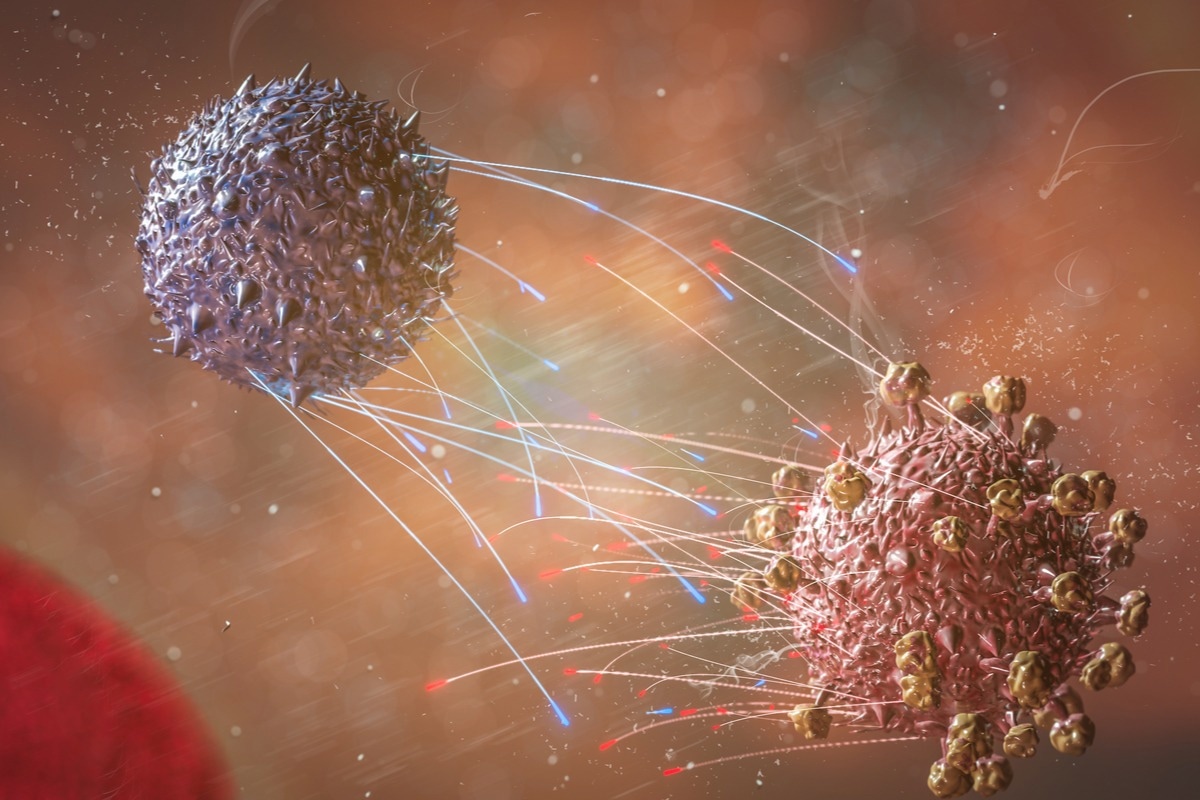A recent study published in Frontiers in Immunology found that the post-coronavirus disease 2019 (COVID-19) functional remodeling of T cells occurs in two steps and confers different convalescent immune states six months after severe acute respiratory syndrome coronavirus 2 (SARS-CoV-2) infection.

Background
Until now, over 540 million COVID-19 cases have been reported globally, which accounts for over 6.3 million deaths. The disease was declared a global pandemic in March 2020 and has evolved ever since with persistent waves of reinfections precipitated by newer variants of concern (VOCs) of the SARS-CoV-2 – the causative organism.
Although the course of COVID-19 is mild in most patients, many develop severe symptoms that may prove fatal. Numerous studies have reported that convalescent individuals suffer from ‘long COVID’ or post-acute COVID-syndrome (PACS). PACS can be mild, with fatigue, dyspnea, cognitive and neurological dysfunctions, or may be detrimental to health, for instance – pulmonary fibrosis and cerebrovascular events like stroke.
Long COVID undermined the quality of life and is associated with significant morbidity, and may precipitate not only in patients who had experienced severe disease in the past but also in those with mild COVID-19 symptoms and asymptomatic cases. However, the immune landscape and possible predictors and mechanisms for PACS remain obscure in patients with asymptomatic SARS-CoV-2 infection and in those who experienced mild symptoms.
PACS represents incomplete recovery from COVID-19 and leads to continued health-related problems in more than 30% of all convalescents. Long COVID occurrence is not dependent on the severity of the SARS-CoV-2 infection. The persistent peripheral immune system has been implicated in the PACS mechanism in patients with an asymptomatic infection and those with mild COVID-19 symptoms and may aid in understanding the symptoms and identifying long COVID predictors.
The study
This study entailed undertaking longitudinal studies of mild, moderate, and severe COVID-19-convalescent patients, at two-time points – to assess the dynamics of T cells immune landscape, integrated with patients-reported symptoms. The patients were interrogated at 3- and 6 months after the diagnosis, to assess signs of immune changes post-COVID-19. Long-lasting immune changes were interpreted, accounting for T cell polyfunctionality and the plasma-inflammatory marker levels.
The study included 59 male patients who had recovered from COVID-19 – who were categorized based on the severity of the disease. Disease severity was estimated by the size of lung lesions on computed tomography (CT) scan and the type of oxygen therapy needed. The study cohort was selected from in-patients between June and November 2020 or March and April 2021, at the Central Clinical Hospital of the Ministry of Interior and Administration in Warsaw.
Findings
It was noted that a majority of the investigations described long COVID, one-to-three months after recovery, or just reported patients who had severe symptoms. While adequate data on T cell subsets from convalescent subjects were lacking.
This study depicted a number of immune parameters collected at three and six months after a mild, moderate, or severe SARS-CoV-2 infection that may predict long COVID. Functional shifts were identified after the first three months post-COVID-19. This renders a senescent state of CD4+ and CD8+ T cells and impedes the CD4+ Treg subsets. This suppresses the unstable Th1/Th17-like Treg phenotype and proinflammatory polarization of CD4+.
Meanwhile, mild convalescents exhibit greater naïve Tregs, rather than the polarization of T cells to the exhausted state. Additionally, many long COVID symptoms, such as fatigue and cognitive dysfunction, were found to be dependent on the severity of COVID symptoms.
Immune dysregulation also correlated to the post-acute COVID-19 phase. Reports suggested that T cell activation and exhaustion were heightened after SARS-CoV-2 infection. Further, T cell exhaustion played a prominent role in long COVID. A greater number of exhausted and senescent T cells were also identified in severe convalescents. Furthermore, significant skewing towards exhausted or senescent T cells was noted after the first three months of post-COVID-19 recovery.
On the other hand, six months after COVID-19 recovery, T cells senescence was found in patients with severe symptoms, but not in those with mild or moderate disease. The results suggested that convalescents who had severe COVID-19 may sustain long-lasting dysfunctions in T cell responses, and hence, impaired immunity and protection against other infections, cancer, and other diseases.
Further, the number of Tregs tended to reduce significantly in COVID-19 patients, and the inhibitions in their activity correlated with COVID-19 severity. The results indicate altered Treg-cell functioning during COVID-19 recovery, which likely affects the inflammation resolution.
In addition, moderate and severe convalescent individuals presented T-cell functional types which generated high levels of Th1 and Th17 cytokines. Of note, longer recovery periods, for example – three-to-six months, strongly inhibit the simultaneous production of Th1 and Th17 cytokines, as well as tumor necrosis factor (TNF)-α and interleukin (IL)-17. This finding was consistent with previous reports.
It was observed that severe convalescents elicited an increased proportion of CD8+ cells producing Granzyme B, along with interferon (IFN)-γ upon long recovery. Moreover, a chronic inflammatory state persists in severe convalescents for an extended period post-COVID-19. Thus, pro-resolution strategies and ‘resolution pharmacology’ can be deployed to prevent the prolonged inflammatory state, post-COVID. These modalities may also help in preventing long COVID in patients who had experienced severe COVID-19 symptoms.
Notably, fatigue and/or cognitive dysfunction are features of long COVID that frequently coexist and affect all convalescents. The post-COVID syndrome occurs in 10-35% of the cases; however, in patients who were hospitalized for COVID, the incidence is higher – up to 85%. The difference in long COVID symptoms and severity of the complications in patients infected by different variants of SARS-CoV-2 is yet to be investigated.
Furthermore, long COVID symptoms also manifest in mild and moderate convalescents and may not be exclusively associated with T-cell exhaustion/senescence or impaired inflammation resolution. In fact, an array of mechanisms precipitating COVID-19 severity may also determine long COVID manifestations.
Mild convalescents may also exhibit long-lasting changes in blood-cell transcriptome, while different immune endotypes were depicted in different long COVID manifestations. Hence, a variety of immune cells may precipitate different long COVID symptoms. In addition, continued long-span immune response remodeling occurs post-COVID, at three-to-six months.
Whereas, fatigue and cognitive dysfunction are severity-independent and may not associate with T-cell exhaustion/senescence. Long-span studies on all severity stages of COVID-19 are warranted in populations of different age-range and gender to delineate the character of the associations of long COVID symptoms with the immune response. This would aid in illustrating the metabolic changes in the immune cells and the neurological manifestations post-COVID-19.
- Wiech, M., Chroscicki, P., Swatler, J., et al. (2022). Remodeling of T Cell Dynamics During Long COVID Is Dependent on Severity of SARS-CoV-2 Infection. Frontiers In Immunology. doi: 10.3389/fimmu.2022.886431 https://www.frontiersin.org/articles/10.3389/fimmu.2022.886431/full
Posted in: Medical Science News | Medical Research News | Disease/Infection News
Tags: Blood, Cancer, CD4, Cell, Chronic, Computed Tomography, Coronavirus, Coronavirus Disease COVID-19, covid-19, CT, Cytokines, Dyspnea, Exhaustion, Fatigue, Fibrosis, Hospital, Immune Response, Immune System, immunity, Immunology, Inflammation, Interferon, Interleukin, Necrosis, Oxygen, Oxygen Therapy, Pandemic, Pharmacology, Phenotype, Pulmonary Fibrosis, Respiratory, SARS, SARS-CoV-2, Severe Acute Respiratory, Severe Acute Respiratory Syndrome, Stroke, Syndrome, T-Cell, Tomography, Tumor, Tumor Necrosis Factor

Written by
Nidhi Saha
I am a medical content writer and editor. My interests lie in public health awareness and medical communication. I have worked as a clinical dentist and as a consultant research writer in an Indian medical publishing house. It is my constant endeavor is to update knowledge on newer treatment modalities relating to various medical fields. I have also aided in proofreading and publication of manuscripts in accredited medical journals. I like to sketch, read and listen to music in my leisure time.
Source: Read Full Article
